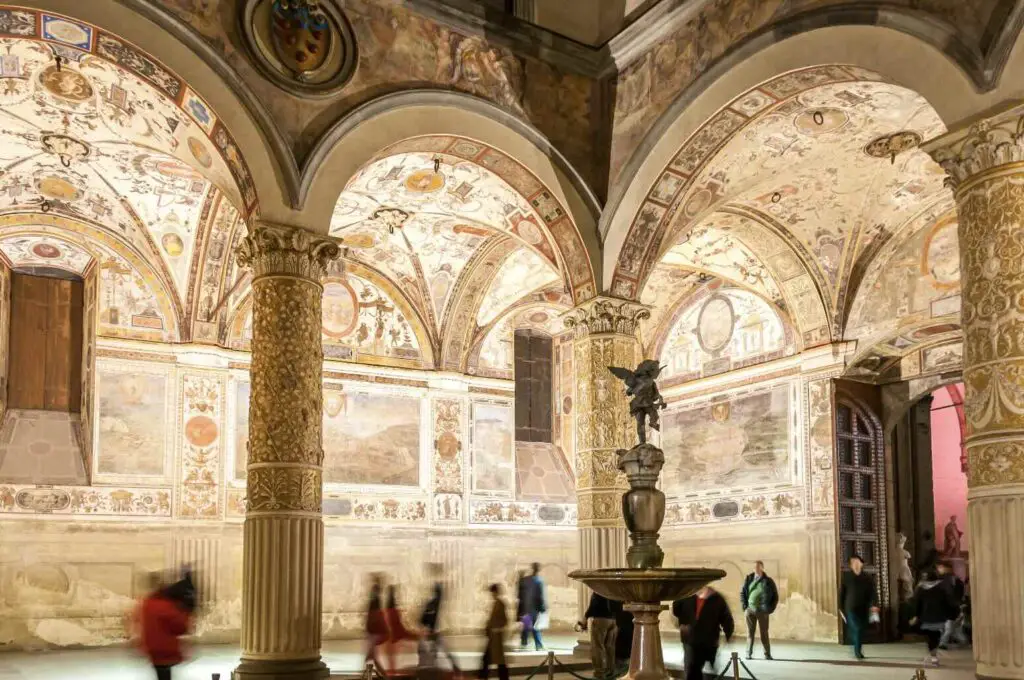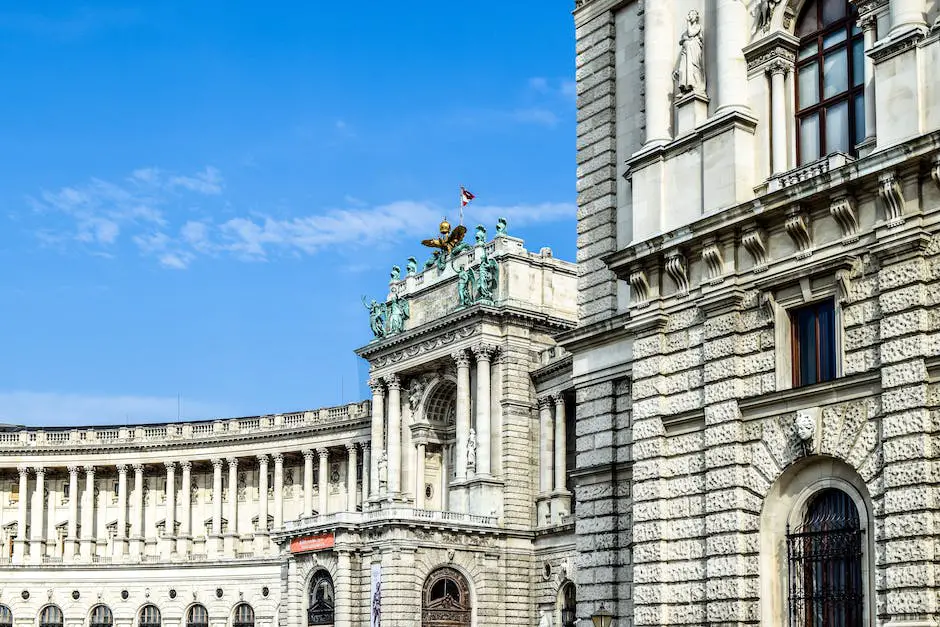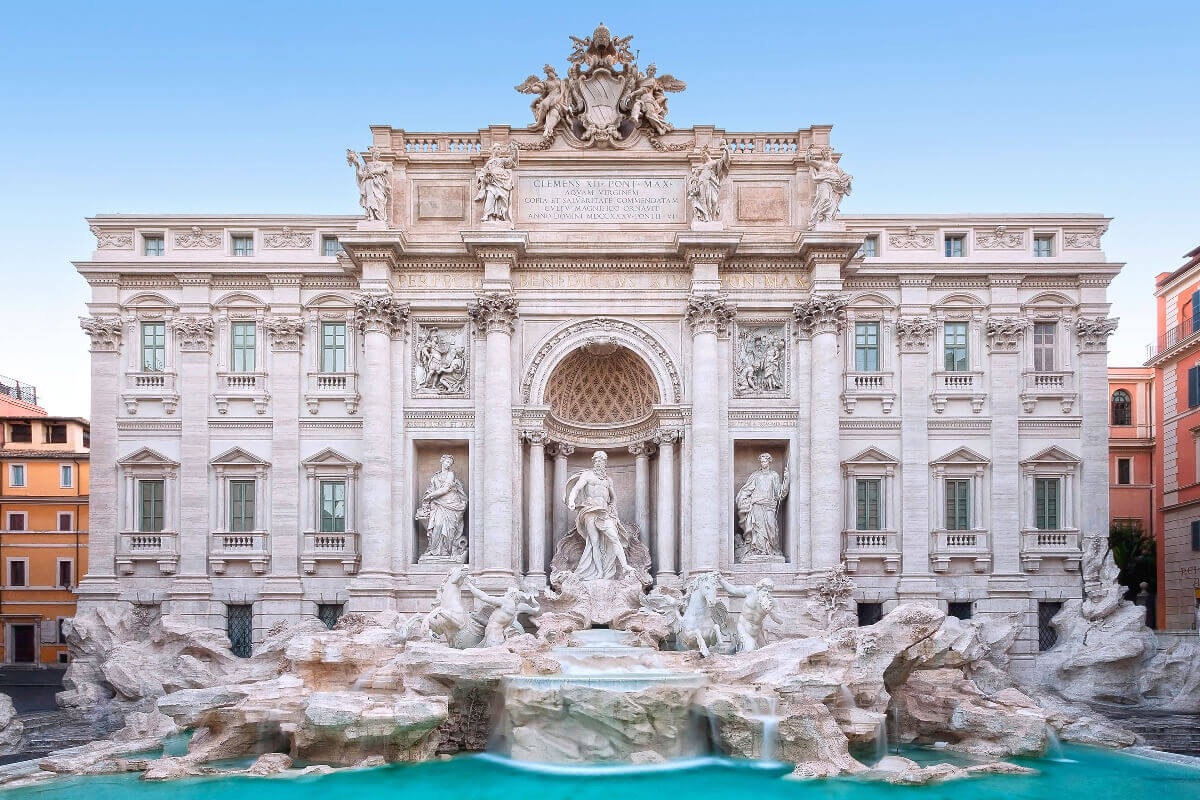The Italian Renaissance, a beacon of art, culture, and thinking, marks one of the most transformative periods in human history, emerging out of a unique confluence of factors that coalesced in Italy from the 14th century onward.
This efflorescence of human creativity traces its roots to a range of historical and cultural preconditions, including the relative political stability of Italian city-states like Florence, the accrual of immense wealth that propelled the patronage of the arts, and the essential rediscovery of ancient classical texts that reignited a passion for learning and innovation.
Table of Contents
- Historical and Cultural Preconditions
- Key Patrons and Their Influence
- Humanism and Its Impact on Art
- Related Questions
Historical and Cultural Preconditions
The Bedrock of Brilliance: Conditions That Cultivated the Renaissance
The Renaissance, a term that resonates with rebirth, is a monument to the human spirit’s unyielding pursuit of beauty and understanding. This epoch was not merely an awakening but an unparalleled explosion of artistic and intellectual accomplishment.
During this period, society witnessed a seismic shift from the more rigid, theocentric medieval worldview to one that embraced humanism and glorified the individual’s potential.
But what were the catalysts that made the soil of Europe so fertile for this profound transformation?
At the heart of the Renaissance lay the rediscovery of the classical world. The latent wisdom ensconced in ancient Greek and Roman texts was unearthed, offering artists and scholars a wellspring of inspiration to redefine the boundaries of creativity and thought.
The classical emphasis on naturalism, harmony, and proportion played muse to Michelangelo and Leonardo, whose canvases and sculptures were saturated with these timeless principles.
The epoch’s birth in Italy was no mere coincidence. Wealth amassed by powerful merchant families like the Medici provided the much-needed patronage that fueled artistic endeavors.
This largesse transformed cities such as Florence and Venice into incubators where ingenuity was welcomed and richly rewarded. A robust trade network also opened the doors to cultural exchange, allowing ideas to flow as freely as the goods that were bartered, enabling Renaissance ideology to seep into the farthest corners of the continent.
Moreover, the invention of the printing press by Johannes Gutenberg heralded a new era of information sharing. Knowledge could now multiply and disseminate with a once inconceivable speed. The press broke down literacy and learning barriers, ensuring the Renaissance’s ideas took root and flourished among a broader audience.
The very fabric of society provided an underpinning support for the blooming of the Renaissance. As the loyalty to feudalism waned, and cities burgeoned, a new social order arose—a bourgeoisie class of merchants, bankers, and artisans who, hungry for status and steeped in newfound wealth, sought to immortalize their legacy in stone, pigment, and scripture.
Lastly, the intellectual milieu of the period was underscored by the stirring of secularism. While religion continued to play an integral role in daily life, the Renaissance saw a soaring interest in the power of human reasoning and empirical evidence.
This amplified focus on human experience and observation is mirrored in the era’s art and literature, with attention to individual emotion and the unfolding of the natural world being showcased as never before.
Indeed, the Renaissance was not spontaneously sparked from the ether. A confluence of economic prosperity, technological innovation, cultural exchanges, shifts in the social hierarchy, and a resuscitating breath of ancient wisdom all conspired to create the conditions ripe for this extraordinary flowering of human achievement—a time that artistically, culturally, and intellectually, redefined the course of history.

Key Patrons and Their Influence
The illustrious patrons of the Renaissance played pivotal roles in catapulting the era into an unparalleled epoch of cultural, artistic, and intellectual revolution. With their deep pockets and insatiable appetite for cultural prestige, these benefactors were not just financiers but keystone figures in crafting the fabric of Renaissance art and thought.
We cannot overlook the Medici family’s monumental influence among Florence’s chief patrons. The Medici were intelligent bankers and discerning patrons of the arts.
Their contribution lay in their wealth and vision for Florence – making it the cradle of Renaissance culture. Under the Medici, artists like Botticelli, Michelangelo, and Leonardo da Vinci found both commissions and a stimulating environment for creative and intellectual growth.
In the Vatican, Popes such as Julius II and Leo X demonstrated an unyielding patronage that remodeled the city of Rome. Their commissions transformed the city into a tableau of Renaissance grandeur.
The Sistine Chapel ceiling, painted by Michelangelo, epitomizes the heights reached by art when supported by such ambitious papal patronage. With Bramante, Raphael, and Michelangelo under their aegis, these Popes turned the Vatican into a cornerstone of High Renaissance art.
The Gonzaga family in Mantua and the Este in Ferrara also played central roles. Their courts became centers for humanist scholars and artists like Titian, Mantegna, and Tura to explore new ideas. Their eagerness to build comprehensive collections of art and antiquities boosted the artists’ careers and helped establish the Renaissance artistic canons.
Patronage extended beyond individuals and families to confraternities and guilds. These collective entities sponsored public artworks imbued with civic pride and devotion, fostering a relationship between art and the wider community. Works such as Ghiberti’s doors for the Florence Baptistery, colloquially known as the “Gates of Paradise,” symbolize this fruitful synergy between artists and civic-minded collectives.
Patronage during the Renaissance also inherently shaped the thematic direction of artworks. While religious narratives remained predominant, an increased interest in portraiture, mythological subjects, and landscapes emerged. Patrons’ desires to see themselves and their values reflected in art affected the subject matter and the natural turn towards a more human-centric artistic narrative.
A vital aspect of the era’s patronage was the emerging role of females as art sponsors. Isabella d’Este, Marchioness of Mantua, amassed an impressive collection and subsidized many artists, generating a dynamic cultural environment. Her discerning taste and clear directions provided a distinctive brand of support, allowing the artist’s intellectual and creative prowess to flourish.
Understanding the chief patrons of the Renaissance adds dimension to the artworks and architectural marvels that survive today. It illuminates the complex intersection of politics, economics, and aesthetics that gave rise to one of the most fertile periods of human creativity. These patrons were not merely checks and balances in the ledgers of artists; they were the catalysts for an era that re-envisioned the very possibilities of art itself.

Moving beyond the wellsprings of Renaissance patronage, it is essential to delve into the remarkable advancements in artistic techniques and methodologies that defined this most effervescent period.
One such transformative development was the mastery of perspective, which provided an unprecedented illusion of depth and realism in two-dimensional art. Filippo Brunelleschi is often credited for developing linear perspective, and Leon Battista Alberti later codified its techniques, fundamentally altering the course of Western art.
Another colossal stride was the refinement of chiaroscuro, which used strong contrasts between light and dark to give the illusion of volume in modeling three-dimensional objects and figures. This technique was employed to significant effect by artists such as Leonardo da Vinci and Caravaggio, infusing their works with a dramatic and lifelike quality that resonates with viewers today.
The Renaissance also witnessed the evolution of oil painting, a medium that allowed for richer colors and more intricate details. This was mainly due to the Van Eyck brothers, who perfected the oil medium, providing artists with a tool that enhanced their ability to capture the textures of fabrics, the luminosity of jewels and metals, and the subtleties of human complexion.
Scaling artistic heights, the Renaissance fostered an era wherein artists began to be recognized as creative geniuses rather than mere craftsmen. This shift was signified by the elevated status of artists like Michelangelo, Raphael, and Titian, whose works were sought after by the most influential figures of the day. They were the luminaries who brought mythological and religious narratives to life with unprecedented vibrancy and emotional depth.
Sculpture, too, was reborn. Donatello’s work, including his iconic David, rediscovered the classical form and infused it with emotional intensity and realism. This set the stage for later artists like Michelangelo, whose Pieta and David remain paragons of Renaissance sculpture.
Architecturally, the era was marked by a revival of ancient Roman designs, such as using symmetrical, harmonious, and balanced domes, columns, and arches. Brunelleschi’s dome of the Florence Cathedral remains a testament to the ingenuity and courage of Renaissance architectural design, fusing beauty and engineering to create a spectacle that still elicits awe.
In portraiture, the humanistic spirit of the Renaissance gave rise to a new emphasis on the individual. Artists like Hans Holbein the Younger and Titian rendered their sitters with personality, dignity, and detail that conferred an almost palpable presence.
Furthermore, the Northern Renaissance contributed immensely through advances in printmaking, which allowed for the dissemination of artworks, ideas, and styles across Europe. Albrecht Dürer and others used woodcut and engraving techniques to create stand-alone pieces of remarkable complexity and beauty and to reproduce other artworks, democratizing access to aesthetic experiences.
Comprehending these pivotal artistic developments opens a window to the extraordinary beauty and craft of Renaissance art and to the time’s broader cultural, intellectual, and social currents. Each stroke, chisel mark, and architectural plan resonated with the burgeoning spirit of human potential and ushered in a new age that forever transformed Western art.

Humanism and Its Impact on Art
Humanism, a Renaissance cultural movement that turned away from medieval scholasticism and revived interest in ancient Greek and Roman thought, induced a profound metamorphosis in art.
It seeped into the very pores of Renaissance art, conditioning artists to reexamine the human condition and the individual’s place within the universe. The transition from the divine-centric medieval period to the human-focused Renaissance was not abrupt but a gentle unveiling of human potential, courage, and beauty.
The impact of humanism on Renaissance art is most discernible in the nuanced portrayal of human subjects. Artists began to focus not only on the divine or nobility but also on everyday individuals, spotlighting their dignity and worth irrespective of their station in life. This was not mere representation for its own sake but a more profound quest to uncover and express the intricate human emotions, psychology, and virtues.
Incorporating mythology and allegory into art is another testament to humanism’s influence. Mythological themes were a revival of classical tastes and a vehicle for artists to explore human nature. Through the stories of gods and heroes, artists like Botticelli and Titian conveyed complex humanist ideas about love, virtue, and morality.
Anatomy and proportion began to reflect a deep study and appreciation of the human form. Artists like Leonardo da Vinci and Michelangelo dedicated themselves to the meticulous anatomy study, producing works that exalted the human body’s splendor.
Their drawings and paintings exhibited a deep understanding and reverence for the design and function of the human anatomy, symmetrical and harmonious, following the ideals of Vitruvian principles.
Perspective, a seemingly technical advance, was a humanist triumph over the constraints of space and the representation thereof on a two-dimensional plane. The development of linear perspective gave artists like Masaccio and Piero della Francesca the means to create the illusion of depth and volume, inviting viewers to engage with the painting as if it were a view into a real, tangible world inhabited by genuine, tangible beings.
Humanist artists brought individualism into the spotlight, venerating the achievements and potential of humanity with realistic portraits and sculptures that captured their subjects’ unique traits and emotions, moving away from the formulaic and idealized portrayals that preceded the Renaissance.
Integrating humanist ideals in art also fostered a climate where scholars and artists would seek out and study ancient texts, fostering an environment where learning and artistic skill melded seamlessly. Philosophy and literature married the visual arts, as seen in Raphael’s “School of Athens” — a superb orchestration of ancient philosophers equally manifesting human intelligence and achievement.
To conclude, Renaissance art burgeoned under the humanist influence, with human potential, intelligence, and beauty stepping into the light of canvases and sculptures. Artists moved away from purely religious narratives and embraced a more comprehensive narrative of existence, placing the secular, the divine, and the individual in dialogue.
Carried by humanism, Renaissance art was nothing less than the visual symphony of humanity’s renewed confidence in itself – an intricate dance of intellect, emotion, and aesthetics.

The tapestry of the Italian Renaissance is rich with the resurgence of humanist ideals, reflected in masterpieces that continue to captivate the world. It is an epoch characterized by a profound appreciation for the harmony between the secular and divine—a symphony of human achievement that found its highest expression in the stunning vistas of art and the written word.
From the ornate corridors of Florence to the gilded canvases that adorned the walls of the powerful, the Italian Renaissance stands not merely as a historical period but as a timeless testament to the enduring capacity for human innovation, creativity, and the boundless pursuit of beauty and knowledge that shapes our collective identity to this very day.
Anita Louise Art is dedicated to art education, great artists, and inspiring others to find and create their art. We love art that uplifts and inspires. #ArtToMakeYouSmile! #ArtToMakeYouHappy!
If you are interested to see any of my art, you can find out more by clicking here. If you are interested in what inspires me and my paintings, you can discover more by clicking here.
We have a free newsletter and would love you to be part of our community; you can subscribe to the newsletter by clicking here. If you have any questions, I would be happy to talk to you at any time. You can reach me, Anita, by clicking here.
Subscribe to our Anita Louise Art YouTube Channel filled with great videos and information by clicking here.
Join us for our podcast “5 Minutes With Art.” Spend just 5 minutes a week with us to discover and learn about great art and artists. You can find out more about our podcast by clicking here.
Related Questions
Where Can I See George Morrison, Native American Modernism Paintings?
George Morrison is considered one of the great Native American Artists. He had a unique style of art that brought in Native American thought and motifs in a modern and abstract expressionist way. His works are found at the Minnesota Museum of American Art; some are in collections at the Heard Museum, Minneapolis Institute of Art, Philadelphia Museum of Art, Walker Art Center, and Whitney Museum of American Art.
By clicking here, you can learn more by reading Where Can I See George Morrison, Native American Modernism Paintings?
Discovering The Timeless Beauty Of 9 Carl Larsson Paintings
Carl Larsson was a Swedish artist who lived from 1853 to 1919. He is best known for his beautiful watercolor paintings depicting idyllic family life and the Swedish countryside. Larsson’s paintings are characterized by their vibrant colors, rich textures, and attention to detail, and they continue to inspire and captivate viewers worldwide.
By clicking here, you can learn more by reading Discovering The Timeless Beauty Of 9 Carl Larsson Paintings.
Salvador Dalí And Pablo Picasso, Similarities And Differences
Salvador Dalí and Pablo Picasso are two of the most iconic and influential artists of the 20th century. These Spanish painters revolutionized the art world with their unique styles and groundbreaking approaches to art. Although they were contemporaries and shared a common heritage, their styles differed vastly, and their artistic visions diverged significantly. Read on as we will explore the similarities and differences between Salvador Dalí and Pablo Picasso.
By clicking here, you can learn more by reading Salvador Dalí And Pablo Picasso, Similarities And Differences.

